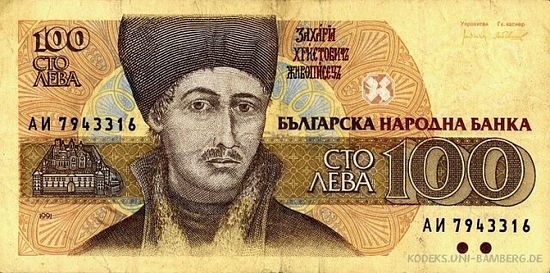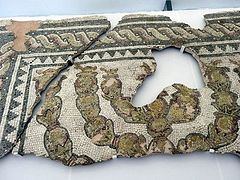Source: Archaeology in Bulgaria
April 7, 2016
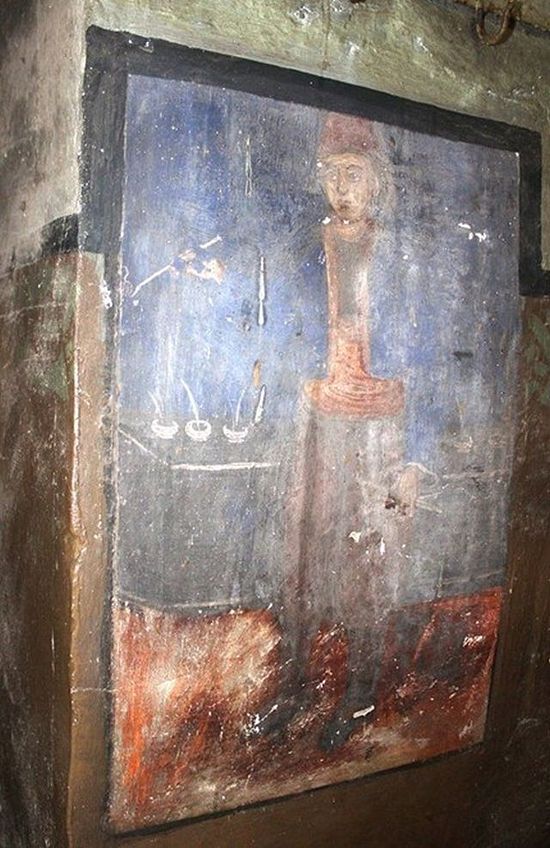 The newly found self-portrait of icon painter Zahari Zograf is a fresco in the St. George Church in Ledenik, Northern Bulgaria. Photo: Trud daily
The newly found self-portrait of icon painter Zahari Zograf is a fresco in the St. George Church in Ledenik, Northern Bulgaria. Photo: Trud daily
A previously unknown self-portrait of Zahari Zograf (1810-1853), the most famous icon painter from Bulgaria’s National Revival Period (18th-19th centuries) has been found on a fresco in a church in the town of Ledenik, Veliko Tarnovo District.
Zahariy Hristovich Dimitrov, more popularly known as Zahari Zograf (“zograf" meaning “(icon) painter") is considered the founder of modern-day Bulgarian secular art based largely on his introduction of everyday life motifs into the icons and murals he painted in Bulgarian churches and monasteries.
What has been described as “Pre-Renaissance" Art emerged in medieval Bulgaria, i.e. in the Second Bulgarian Empire (1185-1396), as early as the 13th century, even before it did in Northern Italy or at roughly the same time, the most famous example being the murals of the Boyana Church in Sofia’s Boyana suburb.
However, this development came to an abrupt end after the invading Ottoman Turks conquered Bulgaria (and the Balkans, for that matter) at the end of the 14th century, essentially sending Bulgarian culture, art, and literature back to the Early Middle Ages for most of the duration of what came to be known in Bulgarian history as the period of Ottoman Yoke (1396-1878/1912).
This situation changed only in the late 18th century with the onset of the Bulgarian National Revival that eventually led to Bulgaria’s National Liberation from the Ottoman Empire.
An icon and mural painter, Zahari Zograf is one of the many notable figures of the Bulgarian Revival. His most popular work in modern-day Bulgarian popular culture is the mural entitled “The Wheel of Life" (also translated as «The Cycle of Life" or the “The Circle of Life") from the Transfiguration Monastery near the city of Veliko Tarnovo in Central North Bulgaria. In the 1990s, it was even printed on the then BGN 100 banknote.
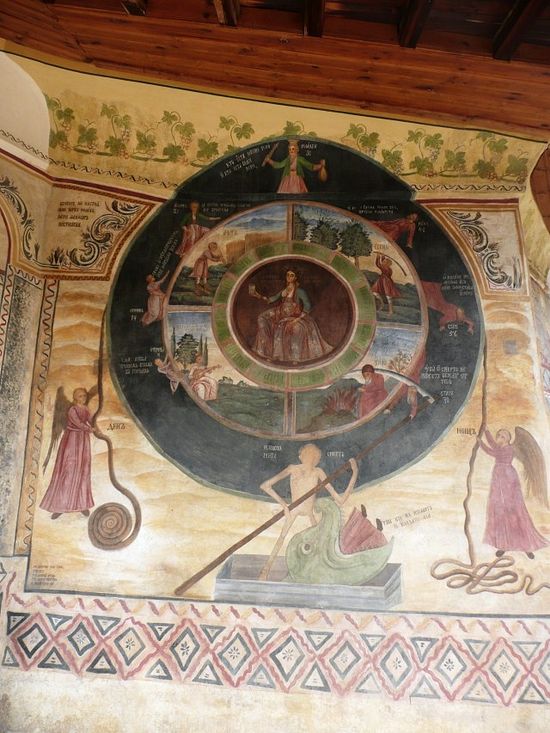 Zahari Zograf’s “Wheel of Life” (“Cycle of Life”) mural from the Transfiguration Monastery near Veliko Tarnovo. Photo: Nikolov2010, Wikipedia
Zahari Zograf’s “Wheel of Life” (“Cycle of Life”) mural from the Transfiguration Monastery near Veliko Tarnovo. Photo: Nikolov2010, Wikipedia
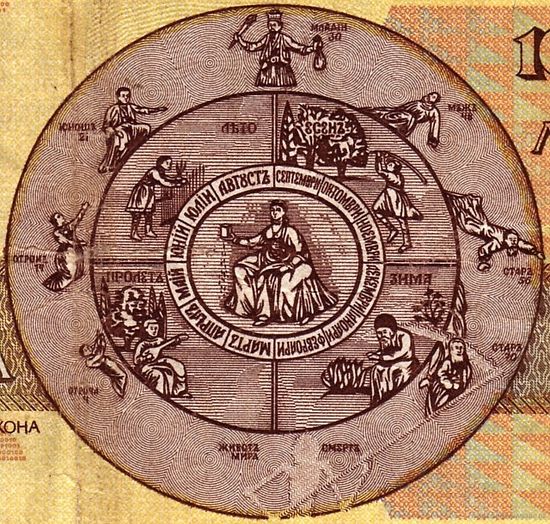 Zahari Zograf’s “Wheel of Life” as depicted on the old BGN 100 banknote from the 1990s. Photo: Kodeks – German Medieval Slavistics Server
Zahari Zograf’s “Wheel of Life” as depicted on the old BGN 100 banknote from the 1990s. Photo: Kodeks – German Medieval Slavistics Server
The previously unknown self-portrait of Zahari Zograf has now been found on a hidden fresco in the St. George Church in the town of Ledenik near Veliko Tarnovo, reports the Trud daily.
The St. George Church in Ledenik itself is known to have been built in 1842 but there are claims that it is much older since graves from the 17th century have been found in its yard.
The unknown self-portrait has been discovered by a local priest, Father Iliya, and one of the church trustees, Toshko Morchev, based on a text in church chronicles. They came across the name of Zahari Zograf in church papers from the 19th century which they inspected in order to draft a brochure for the temple’s anniversary.
The two men were dismayed to read that in one of the niches to left of the entrance of the church, Zahari Zograf painted a mural with his self-portrait, explains Ledenik Mayor Anton Krastev.
“I am an archaeologist myself, and I can appreciate the value of this discovery. This is Zahari Zograf’s fifth known self-portrait but it is quite different from the known ones. It is known that he painted the murals of our church at roughly the same time he painted the murals of the Transfiguration Monastery. Actually, his works in both places are almost identical, «Krastev explains.
The same church chronicle that led to Zahari Zograf’s unknown self-portrait also mentions that he left in the town of Ledenik over 30 of his icons.
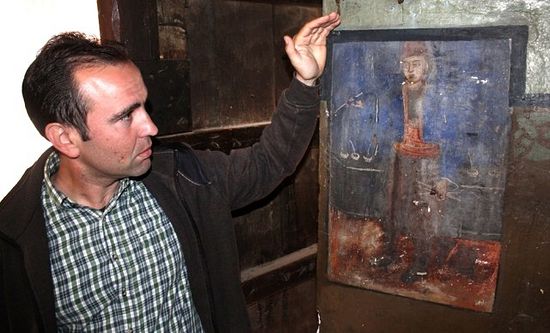 Ledenik Mayor Anton Krastev showing the newly found self-portrait of Zahari Zograf. Photo: Borba daily
Ledenik Mayor Anton Krastev showing the newly found self-portrait of Zahari Zograf. Photo: Borba daily
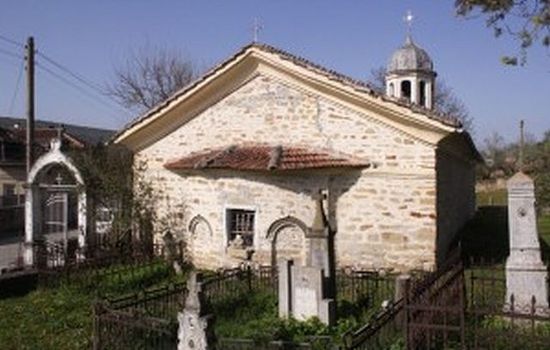 The St. George Church in Ledenik dates back to 1842, and was probably first erected in the 17th century. Photo: Borba daily
The St. George Church in Ledenik dates back to 1842, and was probably first erected in the 17th century. Photo: Borba daily
In addition to his icons and murals, Zahari Zograf is also known for painting a total of four portraits, including a famous portrait of Hristiyaniya (“Christiania"), his sister-in-law, the wife of his brother Dimitar Zograf. Zahari was orphaned at the age of 9, and was raised by his brother, who also taught him icon painting; however, he did not see eye to eye with his elder brother who preferred to stick to the canons of icon and mural painting.
Given that the painting of a female portrait in Ottoman-ruled Bulgaria in the 1840s could be deemed revolutionary, Zahari Zograf’s painting of his sister-in-law has acquired much fame, and has led to all kinds of speculations, including about a secret love story between the two. (In the 1960s, even a novel called “The Sinful Love of the Zograf (“Painter") Zahariy" was published.) In 1841, Zahari Zograf did marry another woman from his native town of Samokov.
He worked on the murals in the Transfiguration Monastery and the church in Ledenik in 1849-1850. His newly found self-portrait on the wall of the church is about 40 cm tall. He painted himself standing, and holding a brush and paints in his hands.
His four known self-portraits (and now five) and his self-depictions in temple murals are seen as rather peculiar for a Christian artist, an example of artistic egocentrism. This peculiarity interpreted by some historians as “evidence of his awareness of his own importance as an artist who overcame medieval humility and anonymity", notes the report on the discovery.
Zahari Zograf perished from typhus in his prime. However, he did manage to leave unique icons and murals in Bulgaria’s most important Eastern Orthodox monasteries: the Rila Monastery, Bachkovo Monastery, Troyan Monastery, Transfiguration Monastery, and the Monastery of the Great Lavra in Mount Athos, Greece, among others.
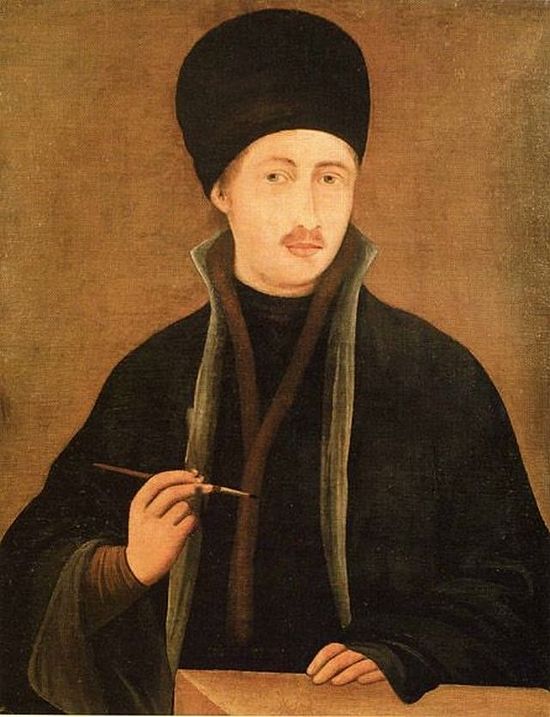 The most famous self-portrait of Zahari Zograf, National Gallery of Art, Sofia. Photo: Yaroslav Blanter, Wikipedia
The most famous self-portrait of Zahari Zograf, National Gallery of Art, Sofia. Photo: Yaroslav Blanter, Wikipedia

